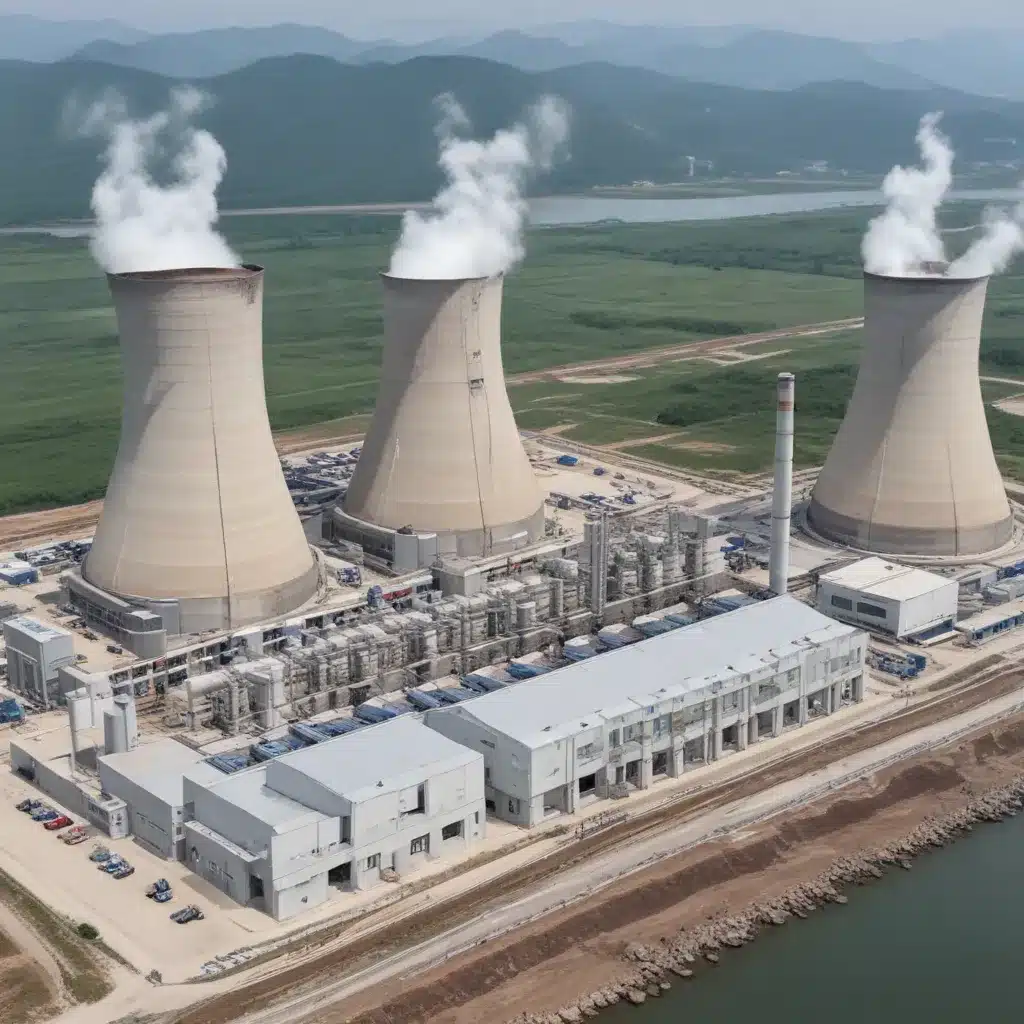
Charting a Path Toward Sustainability
As the global push for renewable energy gains momentum, the story of the Vung Ang power station in Vietnam offers a compelling case study in the complexities of transitioning away from coal-fired power. This sprawling complex, situated in the coastal province of Ha Tinh, has been the subject of intense scrutiny and debate, serving as a microcosm of the broader challenges facing nations seeking to balance energy security, economic development, and environmental stewardship.
The Rise and Challenges of Vung Ang-1
The Vung Ang-1 power station, the first phase of the Vung Ang energy complex, began operations in 2014 and 2015, comprising two coal-fired units with a combined capacity of 1,200 megawatts. The project, undertaken by a joint venture between PetroVietnam and the Vietnamese Lilama Corporation, was hailed as a significant step in Vietnam’s efforts to meet its growing energy demands.
However, the journey has not been without its share of obstacles. Shortly after the completion of the first unit, the power station experienced technical difficulties, with the turbine requiring a major overhaul and the involvement of hundreds of engineers, contractors, and foreign experts to resolve the chronic issues. This setback underscored the complexities inherent in managing the operational challenges of large-scale coal-fired facilities.
The Uncertain Future of Vung Ang-2
Parallel to the Vung Ang-1 project, the development of the Vung Ang-2 power station has been a source of ongoing controversy and uncertainty. Initially envisioned as a two-unit, 1,200-megawatt facility, the project has faced a series of delays, financing challenges, and shifting stakeholder dynamics.
The project’s ownership structure has evolved over time, with Hong Kong-based OneEnergy and the Hanoi-based Refrigeration Electrical Engineering Co. (REE) initially spearheading the venture. However, the withdrawal of CLP, a Hong Kong-based utility company, and the subsequent involvement of South Korean firms like KEPCO and Samsung C&T, have added further complexity to the project’s trajectory.
Concerns over the environmental impact of the Vung Ang-2 project have also been a point of contention, with an independent evaluation of the project’s 2018 Environmental Impact Assessment (EIA) highlighting various shortcomings, including inadequate consideration of alternative energy sources and the potential for adverse effects on local communities and ecosystems.
Despite these challenges, the project has continued to move forward, with the Vietnamese government approving the plant in 2009 and the build-own-transfer (BOT) agreement finalized in 2017. As of 2023, the project is reportedly 64% complete, with Unit 1 slated to begin operations in 2025 and Unit 2 expected to follow in the same year.
The Shifting Sands of Vung Ang-3
The Vung Ang-3 power station, initially proposed as a two-unit, 1,200-megawatt coal-fired facility, has faced an even more uncertain future. In recent years, the project has undergone a significant shift, with the Vietnamese government considering a conversion from coal to natural gas, as well as an expansion in capacity to 4,800 megawatts.
This pivot reflects the broader energy transition underway in Vietnam, as the country seeks to diversify its energy mix and reduce its reliance on coal-fired power. The decision to potentially convert Vung Ang-3 to a gas-fired facility aligns with the country’s updated Power Development Plan (PDP8), which aims to increase the share of renewable energy sources and phase out coal-fired power by 2050.
Navigating the Energy Transition
The Vung Ang power station complex serves as a microcosm of the challenges facing Vietnam and other developing nations as they navigate the energy transition. The interplay of economic development, energy security, and environmental stewardship has created a complex tapestry of stakeholder interests, policy considerations, and technological constraints.
One of the key lessons from the Vung Ang experience is the need for a comprehensive, long-term energy strategy that balances the country’s growing energy demands with its environmental commitments. This requires a careful assessment of alternative energy sources, including renewable technologies, and a willingness to adapt plans as market conditions and global trends evolve.
Furthermore, the Vung Ang case underscores the importance of community engagement and environmental impact assessments in the decision-making process. By ensuring that the voices of local stakeholders are heard and that the potential environmental consequences are thoroughly evaluated, policymakers can make more informed and sustainable choices.
Financing the Energy Transition
The financing of the Vung Ang projects has also been a crucial factor in shaping their trajectory. The involvement of international banks and financial institutions, such as the Japan Bank for International Cooperation (JBIC) and the Export-Import Bank of Korea (KEXIM), has been crucial in securing the necessary capital for these large-scale projects.
However, the shifting attitudes of these institutions toward coal-fired power have also had a significant impact. JBIC, for example, announced in 2021 that it would no longer provide funding for coal plant projects overseas, with the Vung Ang-2 project being the final overseas thermal coal project to receive public and private funding from Japanese sources.
This trend is mirrored in the actions of other financial institutions, such as Citi Bank, which has faced criticism for its continued support of coal projects, including its involvement in the Vung Ang-2 development. As global investors and lenders increasingly prioritize sustainable investments, the availability of financing for coal-fired power projects like Vung Ang is likely to become more scarce.
Embracing a Sustainable Future
The Vung Ang power station complex stands as a testament to the complexities and challenges inherent in the energy transition. As Vietnam and other developing nations grapple with the need to balance economic growth, energy security, and environmental protection, the lessons learned from Vung Ang can serve as a valuable blueprint for navigating these delicate trade-offs.
By prioritizing long-term sustainability, fostering community engagement, and embracing innovative financing mechanisms that support the shift toward renewable energy sources, Vietnam and other countries can chart a path toward a more resilient and environmentally responsible energy future. The Vung Ang experience serves as a cautionary tale, but also a source of inspiration, as the global community works together to address the pressing challenges of climate change and energy security.

